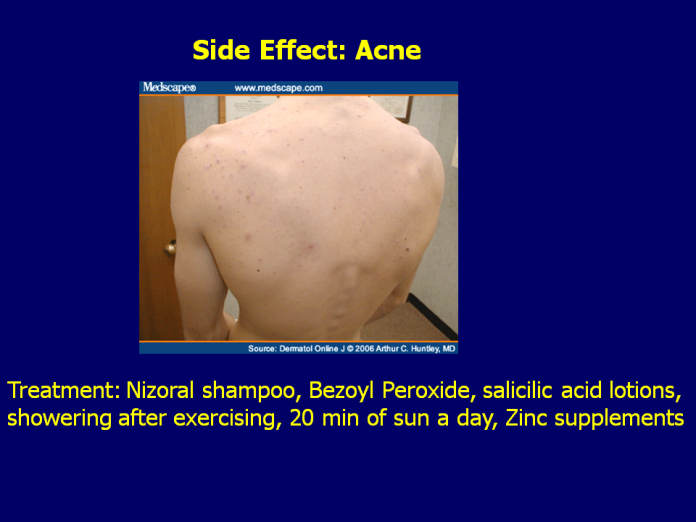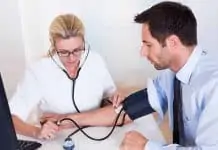Testosterone and Acne: What You Need to Know
Testosterone replacement therapy (TRT) is the prescribed treatment for men with low testosterone levels. It has become a widespread treatment–as many as 11 million men were undergoing TRT in 2013, a number that has grown significantly since.
However, as with any treatment, there are a few adverse side effects of TRT. Thankfully, most are fairly minor. One of the most common is one you probably thought you wouldn’t have to deal with once you passed your teenaged years. That’s right, I’m talking about acne!
Testosterone and Acne: The Link
How does testosterone replacement therapy lead to the formation of zits? It may seem like a bit of a stretch, but it all comes down to one simple hormone: dihydrotestosterone, or DHT.DHT is a hormone that is produced by your body from testosterone. It’s actually five times more potent than testosterone, and it plays a vital role in your sexual development and health. When young men are going through puberty, their bodies produce a lot of DHT in order to encourage the growth of their reproductive organs.
But did you know that DHT also causes your body to produce more skin oils? This increase in skin oils causes the skin to become more oily, which means more oil may get into your pores. When the oil mixes with dead skin cells, the result is that thick white sebum that spurts out of your pimples every time you pop them. Oily skin is one of the primary causes of acne.
So, is it any surprise that TRT increases your risk of acne? TRT is basically flooding your body with testosterone, which is then converted to DHT. The potent hormone increases the production of skin oil, which in turn increases your risk of developing pimples. The P. acne bacteria already lives on your skin, speeding up the rate at which your skin cells die off. Mix the dead skin cells with the increase in skin oil, and you have a TRT-fueled recipe for acne.
If you’ve been on TRT for a few weeks and are noticing more pimples breaking out on your face, back, and chest (yes, the zits aren’t confined to your face), it’s a sign your body is turning the testosterone into DHT. While this is a good thing for your overall health, it may affect your appearance. Thankfully, there’s plenty you can do to deal with the problem!
How to Deal With TRT-related Acne
Want to get rid of pimples or prevent your TRT treatment from causing an outbreak? Here are a few things you can try:– Use Accutane — Accutane, or isotretinoin, is one of the most potent prescription treatments to cure acne. It’s usually used to treat cystic acne, which is a much more serious form of acne that is likely to cause scarring. The treatment is effective in up to 85% of cases. Taking 40 mg of Accutane every day for a week can do wonders for your acne. However, be aware that the medication does come with side effects, and it may lower testosterone levels. Consult your physician before mixing TRT and Accutane.
– Use Sporanox — Sporanox, or itrconazole, is another useful medication to try as a means of curing your acne. It is an anti-fungal drug that may be able to kill off the P. acne bacteria that is increasing your skin cell turnover rate, thereby increasing your risk of clogged pores. Once again, check with your doctor before mixing TRT and Sporanox.
– Try Vitamin B5 — Vitamin B5, or pantothenic acid, is needed by your body in order to produce CoEnzyme A (CoA). This enzyme helps to oxidize (burn) fatty acids, particularly in your skin. If you don’t have enough of this CoA, your body won’t be able to eliminate the fatty acids produced by an increase in DHT, so the skin oil will increase and lead to acne. By taking Vitamin B5, you give your body what it needs to keep the fatty acid production under control.
– Try anti-acne soap — There are a number of anti-acne soaps available at every pharmacy and supermarket in the country. These soaps are often made with Benzoyl Peroxide or Salicylic acid, two highly effective anti-acne treatments. Ideally, you should shower after a heavy workout, and use the soap to wash your face and any body parts where there is an acne breakout.
– Try zinc — Zinc is one of the most important minerals for a healthy body. It plays a vital role in many important internal functions, not the least of which is your body’s immunity to disease. But how can it help to protect against acne? Zinc ensures that your bloodstream carries sufficient Vitamin A to your skin, and it helps to regulate the cellular apoptosis (death) of your skin cells. By ensuring that your skin cells die at a healthy rate, zinc essentially prevents the buildup of dead skin cells that soaks up skin oil to clog your pores.
– Get out — Your body NEEDS sunlight in order to produce Vitamin D, one of the vitamins that play a role in fatty acid oxidation. However, be warned: too much sunlight can dry out your skin, causing it to produce even more oil. No more than 30 minutes of sunlight per day is needed to encourage healthy Vitamin D production.
If your acne is the result of the TRT, you may want to consider reducing the dose of testosterone. This can reduce the amount of DHT produced in your body, preventing acne. However, this is something you should discuss with your doctor. You can also discuss other useful treatments for dealing with the TRT-related acne.

















I have been on trt for 2 years. I have recently started to get bad acne on my back. I have had my dht levels tested multiple times and my levels are very low. In fact it’s on the low side of low.
I wash my back 2 times a day. All my other hormones are in check but obviously high testosterone levels.
Don’t know what else to do. Stopping TRT is not an option.
You probably have folliculitis, not acne. Google folliculitis pictures.
Read this: https://www.excelmale.com/showthread.php?2284-Acne-on-back